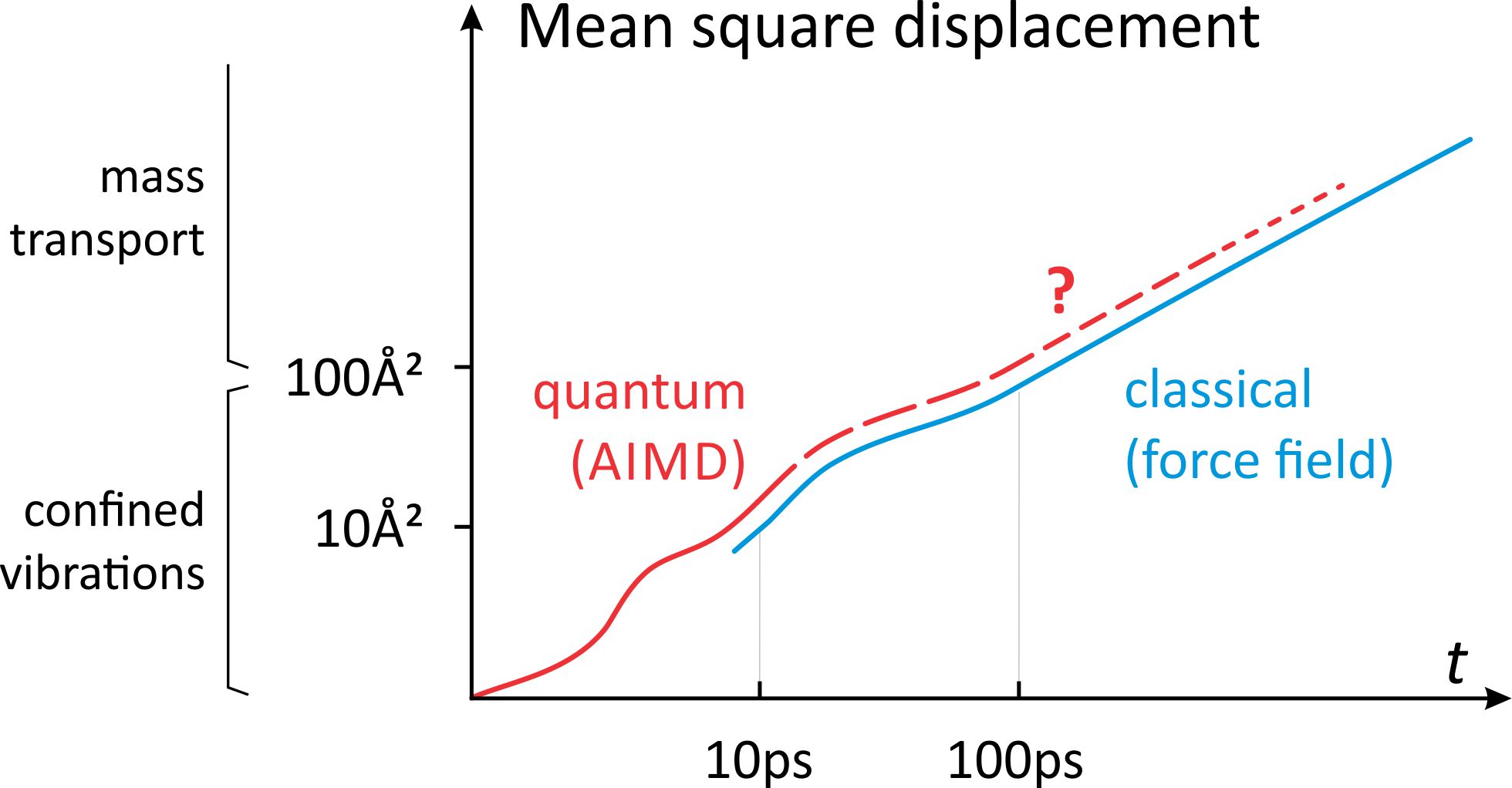Where classical meets quantum: developing diagnostic tools for mass transport simulations at the atomic scale
Where classical meets quantum: developing diagnostic tools for mass transport simulations at the atomic scale
Promotor(en): A. Ghysels /16MODEV03 / Model and software developmentMass transport at the molecular scale is of essential importance in physical, chemical and biological processes. In medicine, for instance, nutrients, oxygen or drugs need to diffuse inside the cells passing several lipid membrane barriers. In materials science, crystallization of alloys requires the organization and mobility of individual metal atoms, or for catalysis in porous materials, reactants need to enter the pores and diffuse through the channels to catalytic hot spots. Experimentally, the diffusivity is typically derived by explicitly tracking the position of particles over time, by measuring the change in flux, or by measuring decorrelation functions of fluorescence signals. In simulations, a trajectory of the particles may be followed by integrating Newton’s equations, which provides detailed insight in the diffusion mechanism at the atomic scale. Simulations are thus a valuable tool besides experiments, especially in complex applications with many other processes at play besides the diffusion process.
At the atomic scale, mass transport can be seen as the result of molecules hopping over a multitude of energy barriers on the energy landscape (Fig. 1). Hopping over such barriers are often rare events, forming the bottleneck in diffusion. Predicting the height of those many barriers correctly with simulations will lead to correct predictions of the longer time scale dynamics, i.e. the mass transport. Nowadays, quantum mechanical simulations, known as ab initio molecular dynamics (AIMD), are rarely used to study diffusion because of the high computational cost. Diffusion is usually modelled with so-called force fields that describe the atomic interactions with classical potentials. While these force fields are usually able to reproduce the equilibrium distribution of quantum mechanical structures (the bottom of the energy wells), their dynamical and transport properties can differ largely (dictated by the energy barriers). The predicted diffusivities may differ by one order of magnitude, e.g. when comparing several force fields for adsorbates diffusing through zeolites. There is thus a clear need to identify which force field is accurately describing the true dynamics.

Fig. 1 - Mass transport consists of hopping over a multitude of energy barriers. Classical force fields are used to approximate the quantum mechanical energy. Force fields describe the energy wells correctly, but they fail in describing the energy barriers.
Fig. 2 - The time scale of quantum simulations is limited by the computational cost. This thesis will investigate how well the average distance traveled by a particle (cfr. mean square distance, scales linearly with time for a drunken-man’s walk) is reproduced by classical force fields.Goal
The primary goal of the thesis is to validate force fields for their accuracy in dynamics, by comparing them to quantum mechanical molecular dynamics. The technical aspect of the thesis will be to create accurate trajectories of particles using molecular dynamics. Accurate ab initio molecular dynamics (AIMD) simulations should be generated with various levels of (quantum) theory. In a first step, various AIMD methods based on different density functional theory (DFT) models will be compared against each other. In a second step, these reference AIMD simulations will be used as a benchmark for force field calculations. The challenge here is that these simulations must cover a long enough time scale, such that not only the fast confined vibrations of the atoms occur, but also the slow diffusion process may be observed. As shown in Fig. 2, the longest time scale that can be reached with AIMD is limited by the computational cost. The focus will therefore be on the diffusion of light molecules that move fairly fast.
The theoretical aspect of the thesis will be the design of metrics to measure the accuracy of the simulated trajectories. Traditionally, comparisons of quantum with classical simulations are based on static properties, such as geometry and energies, but to validate diffusion, diagnostic tools should be designed that measure dynamics properties, such as velocities and time-dependence. The starting point for the metrics will therefore be spectral analysis and time-correlation functions. The results of the analysis should also be coupled back to the underlying quantum and classical descriptions. The diagnostics should give physical insight in discrepancies between quantum and classical descriptions, and thus it will also give ideas on how to improve force fields in their ability to reproduce quantum dynamics.
Mobility
This research topic will be conducted in the framework of a strong international network and if possible the student will be actively involved in work discussions with collaborative partners.Motivation Appl. Phys.
The engineering aspect is the development of a practical computational tool that implements a reduction of degrees of freedom. The physics aspect is the theoretical development of the reduction technique.
- Study programmeMaster of Science in Engineering Physics [EMPHYS], Master of Science in Physics and Astronomy [CMFYST]ClustersFor Engineering Physics students, this thesis is closely related to the cluster(s) NANO, MODELING, METHOD DEVELOPMENTKeywordsDiffusion, Quantum mechanics, ab initio, Density functional theory, Force fields


